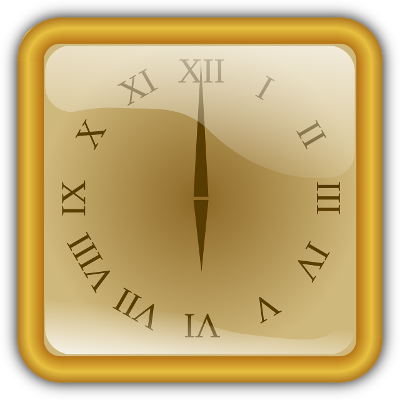Roman Numerals Converter
Select the type of conversion, either whole number (Hindu-Arabic number) to roman numeral or roman numeral to whole number.
Roman Numerals
Symbols Of Roman Numerals

The number system followed by the ancient roman people. Conventional roman numerals are basically a combination of Latin alphabets I, V, X, L, C, D and M. This conventional system can generate roman numerals up to 4,999. The extend the roman system beyond this limit, several other systems were introduced. One among the system is Vinculum. In this system the traditional roman numeral symbol is represented by a overline (I, V, X, L, C, D and M) in order to multiply it by thousand (1,000). This can be further extended by adding double overlines (I, V, X, L, C, D and M) to multiple it by million (1,000,000).
Because, overlines and double overlines (M, M) are difficult to use in computer user interface, the alternative symbol using single and double brackets (M) and ((M)) are used in recent years.
Below is the table of conventional and extended roman numeral symbols along with the recent alternative symbols using brackets instead of overlines.
| Symbol | Value | Alternative Symbol |
|---|---|---|
| I | 1 | |
| V | 5 | |
| X | 10 | |
| L | 50 | |
| C | 100 | |
| D | 500 | |
| M | 1,000 | |
| I | 1,000 | (I) |
| V | 5,000 | (V) |
| X | 10,000 | (X) |
| L | 50,000 | (L) |
| C | 100,000 | (C) |
| D | 500,000 | (D) |
| M | 1,000,000 | (M) |
| I | 1,000,000 | ((I)) |
| V | 5,0000,00 | ((V)) |
| X | 10,000,000 | ((X)) |
| L | 50,000,000 | ((L)) |
| C | 100,000,000 | ((C)) |
| D | 500,000,000 | ((D)) |
| M | 1,000,000,000 | ((M)) |
Rules Of Roman Numerals
There are few set of rules to be followed while using roman numerals. Initially, in the conventional system, the romans used only up to 3,999. So, the rules were based on the numerals up to 3,999. Later on, when more symbols are added to extend the numeral, few more rules were added on to accommodate the new symbols.
-
Repetition Rule
- The symbols I, X, C, M, I, I, X, C, M, I, X, C, M can be repeated in succession only up to three times. For example, 8 is represented as VIII.
- The Symbols V, L, D, V, L, D, V, L, D should not be repeated. they can be used in a number only once.
-
Addition Rule
When a symbol of lesser value is in the right of a symbol of a similar value or greater value then the symbols should be added.
For example, If the number is represented as XV then the value of X and V should be added, i.e. XV = 10 + 5 = 15
-
Subtraction Rule
-
When a symbol of lesser value is in the left side of a symbol of a greater value then the symbols should be subtracted.
Subtraction rule comes in effort only when a number cannot be generated using the addition rule.
For example, If the number is represented as IX, then the value of I should be subtracted from X, i.e. IX = 10 - 1 = 9.
-
When a symbol of smaller value is placed in between two symbols of greater value, it shouls be subtracted from the symbol on the right.
It should not be added to the the symbol on its left.
For example, If a number is represented as LIX, then then the value of I should be subtracted from X, i.e. LIX = L + (X - I) = 50 + (10 - 1) = 59.
-
-
Larger Numbers
To represent numbers beyond 3,999 a single-overline or double-overline can be added to the basic conventional symbols so as to multiply the number by 1,000 or 1,000,000 respectively.
For Example:
X = 10 x 1,000 = 10,000 (Ten Thousand).
X = 10 x 1,000,000 = 10,000,000 (Ten Million).
Reference
Page Last Modified On: Sep 15, 2016
Disclaimer: We took every effort to provide higher level of accuracy in the calculators, converters and tools we have added to www.MyTecBits.com Tools section. But, we cannot give any guarantee or can be held responsible for any errors, defects, faults or mistakes in any of the calculators, converters or tools. Please see detailed terms of use and liability disclaimer in Terms of Use Page.